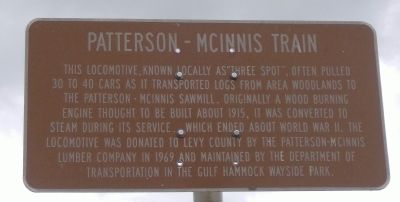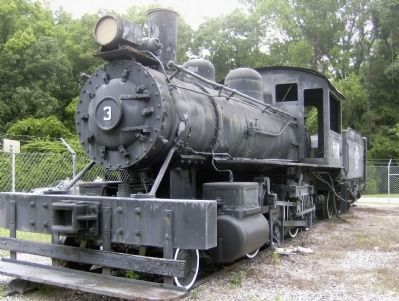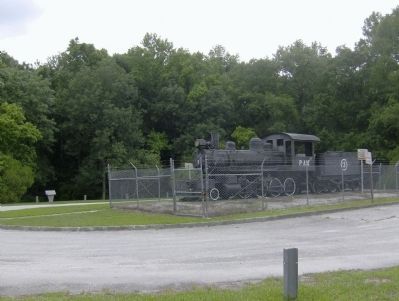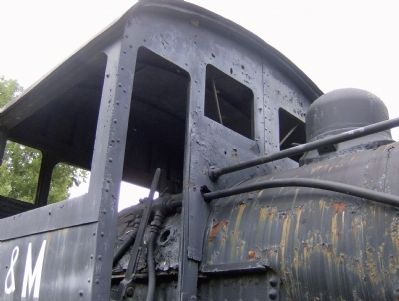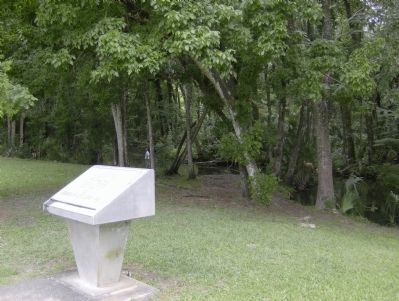Gulf Hammock in Levy County, Florida — The American South (South Atlantic)
Patterson-McInnis Train
This locomotive, known locally as "Three Spot", often pulled 30 to 40 cars as it transported logs from area woodlands to the Patterson-McInnis Sawmill. Originally a wood burning engine thought to be built around 1915, it was converted to steam during its service, which ended about World War II. The locomotive was donated to Levy County by the Paterson-McInnis Lumber Company in 1969 and maintained by the Florida Department of Transportation in the Gulf Hammock Wayside Park.
Erected by Florida Department of Transportation.
Topics. This historical marker is listed in these topic lists: Horticulture & Forestry • Industry & Commerce • Railroads & Streetcars. A significant historical year for this entry is 1915.
Location. 29° 15.211′ N, 82° 43.467′ W. Marker is in Gulf Hammock, Florida, in Levy County. Marker is on State Road 19, on the right when traveling south. Touch for map. Marker is in this post office area: Gulf Hammock FL 32639, United States of America. Touch for directions.
Other nearby markers. At least 3 other markers are within 15 miles of this marker, measured as the crow flies. Pat-Mac Locomotive/Gulf Hammock as a Company Town (here, next to this marker); Badly Wounded (approx. 9.6 miles away); Dr. James M. Jackson Home (approx. 14.2 miles away).
Additional commentary.
1. "Conversion to steam"
I first visited this wayside park in the early 1980s and photographed the sign particularly because of one serious error of wording and a minor matter of terminology. It was my intention at the time to bring this matter to the attention of local authorities but procrastination prevailed off and on until recently when I unexpectedly ran across the photograph of the sign and determined to try to make contact by e-mail, a capability not available to me until 1998 when our children introduced me (at the age of 81) to the world of computers.
The more serious error was the statement that this locomotive was converted from wood burning to steam . Quite obviously it was always a steam locomotive and the conversion was probably (though not certainly) to oil as a fuel. The error in terminology was in calling the locomotive a train , which it would not be unless it had a connected string of cars behind it.
— Submitted August 23, 2009, by Charles E. (Chuck) Oliver of Clearwater, Florida.
Credits. This page was last revised on June 16, 2016. It was originally submitted on May 27, 2009, by David Tibbs of Resaca, Georgia. This page has been viewed 2,714 times since then and 77 times this year. Photos: 1, 2, 3, 4, 5. submitted on May 27, 2009, by David Tibbs of Resaca, Georgia. • Bill Pfingsten was the editor who published this page.
